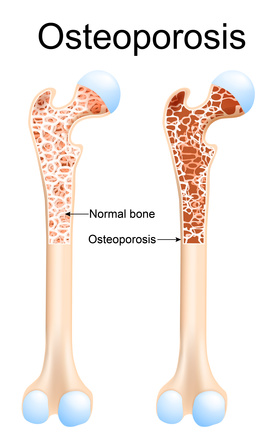
Why Oestrogen Detox Matters for PMS, endometriosis, fertility and even HRT
September 15, 2025
Addressing Microclots in Long Covid
October 6, 2025Menopause, Hormone Balance, and How to Know if a Strategy is Working

Menopause is a profound life transition marked by shifting hormone patterns. While it is a natural part of aging, the fluctuating and declining hormone levels can bring significant changes to health, mood, sleep, and overall quality of life.
For many women, the question isn’t just what’s happening but also what can I do about it — and if you pursue hormone support strategies, how do you know it’s working?
Hormone Decline Isn’t Always Linear
One of the most important things to understand about menopause is that the transition is gradual and uneven. Hormones don’t simply taper off neatly — they fluctuate, sometimes dramatically, before settling into consistently lower levels.
- Progesterone tends to decline first. This can leave oestrogen relatively unopposed, creating symptoms like heavy cycles, breast tenderness, irritability, or disrupted sleep.
- Oestrogen follows later. When oestrogen dips, hot flashes, vaginal dryness, night sweats, and mood changes often intensify.
- Androgens such as testosterone and DHEA also decline over time, influencing muscle strength, libido, and motivation.
This means it’s possible to already be in a low-hormone state — even while still having cycles — and this is often when women begin to explore ways to restore balance.
The Role of Progesterone in Midlife
Progesterone is sometimes called the “goldilocks hormone” because the right balance is crucial. Too little, and oestrogen’s effects can become unbalanced; too much, and sedation or fluid retention may appear.
Key functions of progesterone include:
- Balancing oestrogen to support uterine and breast health
- Supporting sleep by interacting with calming GABA receptors in the brain
- Reducing vasomotor symptoms such as hot flashes
- Contributing to bone health alongside oestrogen
For many women in their 40s, it’s the drop in progesterone that triggers some of the earliest symptoms of perimenopause.
How Do You Know if Hormone Support Is Working?
Tracking whether hormone-balancing strategies are effective involves looking at several layers:
Symptoms
-
- Are hot flashes less frequent?
- Is sleep more restorative?
- Are mood swings easing?
- Is energy or libido returning?
Symptom relief is often the clearest indicator but there are others…
- Lab Markers
- Standard blood tests may show shifts in oestrogen, progesterone, and testosterone.
- Some women also use advanced testing (like the DUTCH test) to track hormone metabolism and downstream effects.
- Safety Monitoring
- Making sure hormone balance does not tip too far in the other direction
- Watching for signs of excess (e.g., breast tenderness, fluid retention, irritability)
- Consistency Over Time
- Stabilising hormone patterns (rather than roller-coaster fluctuations) is a strong sign that an approach is on track.
Advanced Monitoring: Insights from the DUTCH Test
While conventional blood tests are useful, they provide only a snapshot. For a more integrated view, we recommend the DUTCH test.
This test measures not only hormone levels but also how those hormones are metabolized. Key features include:
- Oestrogen metabolism: Shows whether oestrogen is breaking down into more protective or potentially riskier pathways. See our previous blog here.
- Progesterone metabolites: Offers a look at how progesterone is being processed, though systemic values don’t always always reflect uterine protection.
- Androgens (testosterone, DHEA): Provides insight into whether low energy or libido might be linked to androgen decline.
- Cortisol rhythms: Adds context by mapping stress hormone patterns across the day.
Why this matters:
- Topical hormones can create fluctuating blood values, while dried urine averages levels across the day, providing a steadier picture.
- Metabolite tracking highlights whether detoxification is balanced — for example, if oestrogen metabolism is skewed toward less favorable pathways.
- Follow-up testing can show whether hormone support is achieving the desired balance without overshooting.
It’s worth noting that no test offers complete certainty. Progesterone’s protective effects on the uterus, for example, can’t be confirmed through urine or blood levels alone. That’s why any testing data should always be paired with symptom tracking and input from a skilled practitioner.
Do Women Need Testosterone Support?
While oestrogen and progesterone often get most of the attention, androgens also decline in midlife. Low testosterone or DHEA can contribute to:
- Loss of muscle mass and strength
- Decreased motivation or vitality
- Reduced libido
- Brain fog or low mood
Some women find that supporting testosterone or its precursors improves energy, mood, and sexual wellbeing. However, dosing must be careful: too much can lead to acne, hair changes, or metabolic effects.
The DUTCH Test can provide insights into androgen metabolism, but serum /blood testing remains a useful companion for tracking testosterone specifically.
Putting It All Together
Menopause is not simply about oestrogen decline — it’s about a shifting network of hormones that influence the brain, bones, cardiovascular system, metabolism, and quality of life.
Knowing whether your approach to hormone support is working involves:
- Listening to your body’s signals
- Pairing symptom relief with testing when appropriate
- Staying mindful of safety and side effects
- Recognizing that balance often requires fine-tuning over time
Advanced tools like the DUTCH Test can deepen understanding, particularly around metabolism and long-term hormone pathways. Combined with conventional markers and careful clinical oversight, they can help make midlife hormone strategies more precise and personalized.
Hormone support is not one-size-fits-all. What works for one woman may not work for another. Approaches should be individualized, symptom-driven, and aways combined with a solid nutritional base and lifestyle practices.


